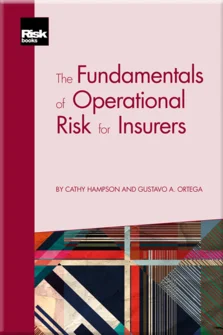Reporting and Analysis
Reporting and Analysis
Introduction
The Financial Crisis of 2008 and Subsequent Market Changes
The Business Case for Insurers to Adopt Operational Risk Management
Insurance: Its Products, Services and Business Operations
Insurers’ Operational Risk Governance and Framework
Internal Risk-Event Reporting
External Loss Data
Risk and Control Assessments
Risk Indicators
Reporting and Analysis
The Past, the Present and the Future of Operational Risk Modelling
The Insurance Landscape
Three Lines of Defence
Reputation(al) Risk
Conduct Risk
Conclusions
INTRODUCTION
However well a company’s risk-and-control framework is performing in preventing losses and keeping risk within a risk tolerance or appetite, unless people know how it is performing, the wrong decisions could be made. The value of good reporting and the associated analysis that goes with it is that people can quickly determine the key points and make relevant decisions. In this chapter, we will explore the attributes of good reporting through solid, reliable, foundational data and analysis that differentiate one company from another. In terms of the insurance industry, we will look at the additional types of statutory reporting required that distinguish the industry from investment banking.
However, there are many overlaps in quality reporting aspects, and good-quality reporting shares characteristics that span industries. The chapter is divided into two sections: “Reporting” and “Analysis”. Under “Reporting”, we further differentiate between external and internal reporting and use regulatory examples from the USA and the UK.
Reporting is a means of communication between the company and the outside world. It may be that the regulator wants that communication to
Copyright Infopro Digital Limited. All rights reserved.
As outlined in our terms and conditions, https://www.infopro-digital.com/terms-and-conditions/subscriptions/ (point 2.4), printing is limited to a single copy.
If you would like to purchase additional rights please email info@risk.net
Copyright Infopro Digital Limited. All rights reserved.
You may share this content using our article tools. As outlined in our terms and conditions, https://www.infopro-digital.com/terms-and-conditions/subscriptions/ (clause 2.4), an Authorised User may only make one copy of the materials for their own personal use. You must also comply with the restrictions in clause 2.5.
If you would like to purchase additional rights please email info@risk.net











